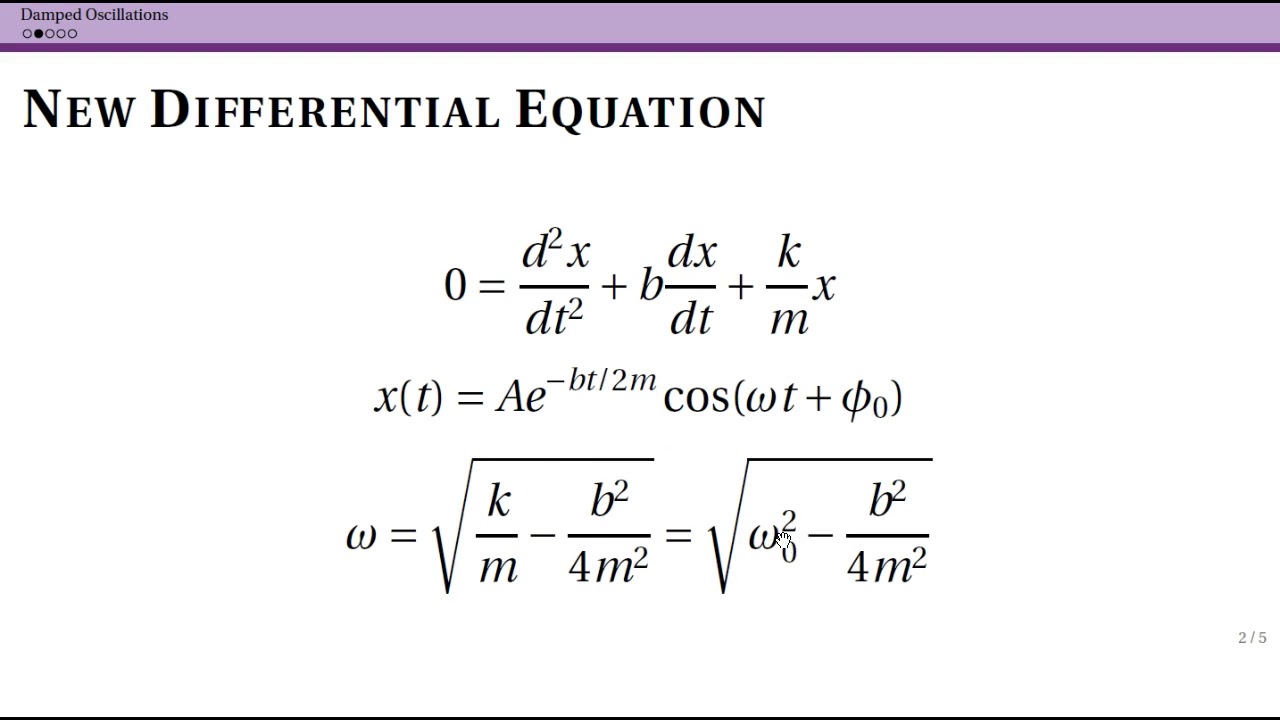
Damped oscillations might sound complex, but they’re all around us. Ever noticed how a swinging pendulum eventually stops? That’s damped oscillation in action. Damping occurs when energy is lost from an oscillating system, usually due to friction or resistance. This energy loss causes the motion to gradually decrease until it stops. Understanding damped oscillations helps in designing buildings to withstand earthquakes, creating better car suspensions, and even tuning musical instruments. From the gentle sway of a tree branch to the precise movements of a watch, damped oscillations play a crucial role in our daily lives. Ready to learn some cool facts? Let’s get started!
What Are Damped Oscillations?
Damped oscillations occur when an oscillating system loses energy over time, causing the amplitude of the oscillations to decrease. This phenomenon is common in many physical systems, from mechanical to electrical.
- Damping refers to the reduction in the amplitude of an oscillation due to energy loss.
- Amplitude is the maximum extent of a vibration or oscillation, measured from the position of equilibrium.
- Energy loss in damped oscillations can occur through various mechanisms like friction, air resistance, or electrical resistance.
Types of Damping
Different systems experience different types of damping, each affecting the oscillations uniquely.
- Underdamping occurs when the system oscillates with gradually decreasing amplitude.
- Critical damping is the exact amount of damping that allows the system to return to equilibrium as quickly as possible without oscillating.
- Overdamping happens when the system returns to equilibrium without oscillating but more slowly than in the critically damped case.
Mathematical Representation
Damped oscillations can be described mathematically, helping scientists and engineers predict system behavior.
- Differential equations are used to model damped oscillations mathematically.
- Damping coefficient is a parameter in the differential equation that quantifies the amount of damping.
- Natural frequency is the frequency at which a system oscillates when not subjected to damping or external forces.
Real-World Examples
Damped oscillations are not just theoretical; they appear in everyday life and various technologies.
- Car shock absorbers use damping to smooth out the ride by reducing oscillations from bumps.
- Seismographs employ damping to prevent the needle from oscillating wildly after detecting an earthquake.
- Electric circuits with resistors, capacitors, and inductors can exhibit damped oscillations in their current and voltage.
Importance in Engineering
Understanding damped oscillations is crucial for designing stable and efficient systems.
- Building design often incorporates damping to reduce vibrations from wind or earthquakes.
- Aerospace engineering uses damping to manage vibrations in aircraft and spacecraft.
- Mechanical watches use damping to ensure accurate timekeeping by controlling the oscillations of the balance wheel.
Biological Systems
Damped oscillations are also found in biological systems, affecting various physiological processes.
- Heartbeats can be modeled as damped oscillations, with the damping ensuring the heart returns to a resting state between beats.
- Neural oscillations in the brain exhibit damping, which helps in stabilizing neural activity.
- Muscle movements often show damped oscillatory behavior, aiding in smooth and controlled actions.
Measuring Damping
Quantifying damping helps in analyzing and improving system performance.
- Logarithmic decrement is a measure of the rate of amplitude decrease in damped oscillations.
- Quality factor (Q) indicates how underdamped an oscillator is, with higher values representing less damping.
- Damping ratio is a dimensionless measure describing how oscillations decay relative to critical damping.
Historical Context
The study of damped oscillations has a rich history, contributing to advancements in science and technology.
- Galileo Galilei was one of the first to study oscillations, laying the groundwork for future research.
- Lord Rayleigh made significant contributions to the understanding of damping in acoustics and mechanics.
- James Clerk Maxwell developed theories that included damping effects in electromagnetic oscillations.
Fun Facts
Damped oscillations can be fascinating and sometimes surprising.
- Musical instruments like guitars and pianos use damping to control the sound's duration and quality.
- Pendulum clocks rely on damping to maintain accurate time by minimizing unwanted oscillations.
The Final Beat
Damped oscillations are everywhere, from the gentle sway of a swing to the precise movements of a car's suspension. Understanding these oscillations helps us grasp how systems lose energy over time and eventually come to rest. This knowledge isn't just academic; it has real-world applications in engineering, seismology, and even everyday gadgets.
Knowing about damping can improve designs, making them safer and more efficient. For instance, engineers use this concept to build bridges that can withstand earthquakes or to design quieter, smoother-running machines.
So, next time you see something oscillating, remember there's more to it than meets the eye. It's a dance of energy, resistance, and time. Keep these facts in mind, and you'll appreciate the hidden rhythms that keep our world in motion.
Was this page helpful?
Our commitment to delivering trustworthy and engaging content is at the heart of what we do. Each fact on our site is contributed by real users like you, bringing a wealth of diverse insights and information. To ensure the highest standards of accuracy and reliability, our dedicated editors meticulously review each submission. This process guarantees that the facts we share are not only fascinating but also credible. Trust in our commitment to quality and authenticity as you explore and learn with us.
